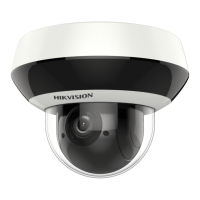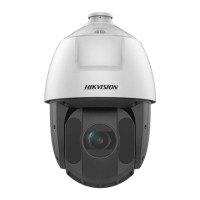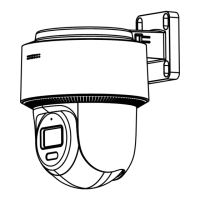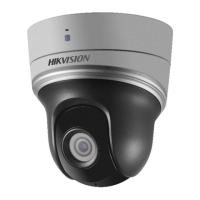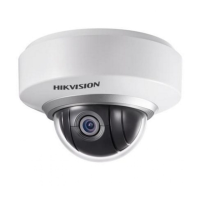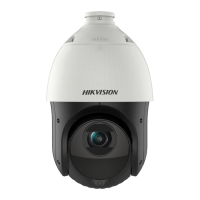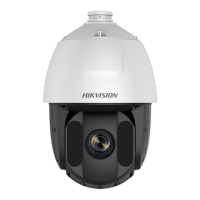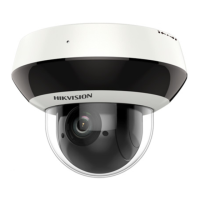
Do you have a question about the HIKVISION DS-2DE2A404IW-DE3/W and is the answer not in the manual?
| Camera Type | PTZ |
|---|---|
| Image Sensor | 1/2.8" Progressive Scan CMOS |
| Max. Resolution | 2560 × 1440 |
| Effective Pixels | 4 MP |
| WDR | 120 dB |
| Video Compression | H.265+/H.265/H.264+/H.264 |
| Ingress Protection | IP66 |
| Min. Illumination | 0.005 Lux @ (F1.6, AGC ON), 0 Lux with IR |
| Tilt Range | -15° to 90° |
| Network Interface | 1 × RJ45 10M/100M Ethernet port |
| Protocols | IPv4/IPv6, HTTP, HTTPS, FTP, SMTP, SNMP, DHCP, DNS, DDNS, NTP, UPnP, RTSP, RTCP, RTP, TCP/IP, UDP, IGMP, ICMP, 802.1X, QoS, Bonjour |
| Power Supply | DC12V ± 25%, PoE (802.3af) |
| Focal Length | 2.8 mm ~ 12 mm |
| Lens | Motorized zoom lens |
| Pan Range | 360° continuous rotation |
Describes the manual's applicability and content for Network PTZ cameras.
Outlines legal limitations, warranties, and responsibilities related to product use.
Details FCC compliance, limits for Class A digital devices, and operating conditions.
Lists critical precautions to prevent serious injury or death from product misuse.
Lists precautions to prevent potential injury or material damage from product misuse.
Lists minimum system requirements for web browser access to the camera.
Describes various functions and capabilities of the Network PTZ camera.
Explains how to connect and configure the camera within a Local Area Network (LAN).
Guides on activating the camera for first use via web browser, SADP, or client software.
Explains how to connect the camera to a Wide Area Network (WAN) using static or dynamic IP.
Provides instructions for accessing and viewing the camera feed via a web browser.
Details how to access and manage the camera using client software like iVMS-4200.
Sets local configuration for live view, recording, and picture saving options.
Describes the interface for viewing live video and controlling camera functions.
Details how to control the camera's pan, tilt, zoom, and focus using PTZ controls.
Configuration for recording schedules, capture schedules, and network storage (Net HDD).
Configuration for various event triggers like motion detection and alarm inputs.
Advanced event detection features including audio, face, and intrusion detection.
Settings related to the camera's PTZ functionality, limits, and actions.
Settings related to network connectivity, including TCP/IP, DDNS, and PPPoE.
Settings for video and audio streams, including resolution, bitrate, and encoding.
Settings for image quality and display, including exposure, white balance, and noise reduction.
General system settings such as time, maintenance, and security configurations.
Procedures for rebooting, restoring defaults, exporting/importing configurations, and upgrading firmware.
Accessing and exporting system logs for troubleshooting and monitoring.
Securing stream data through RTSP and WEB authentication methods.
Restricting access to the camera by specifying allowed or forbidden IP addresses.
Steps to create new user accounts, define levels, and set permissions for camera access.

